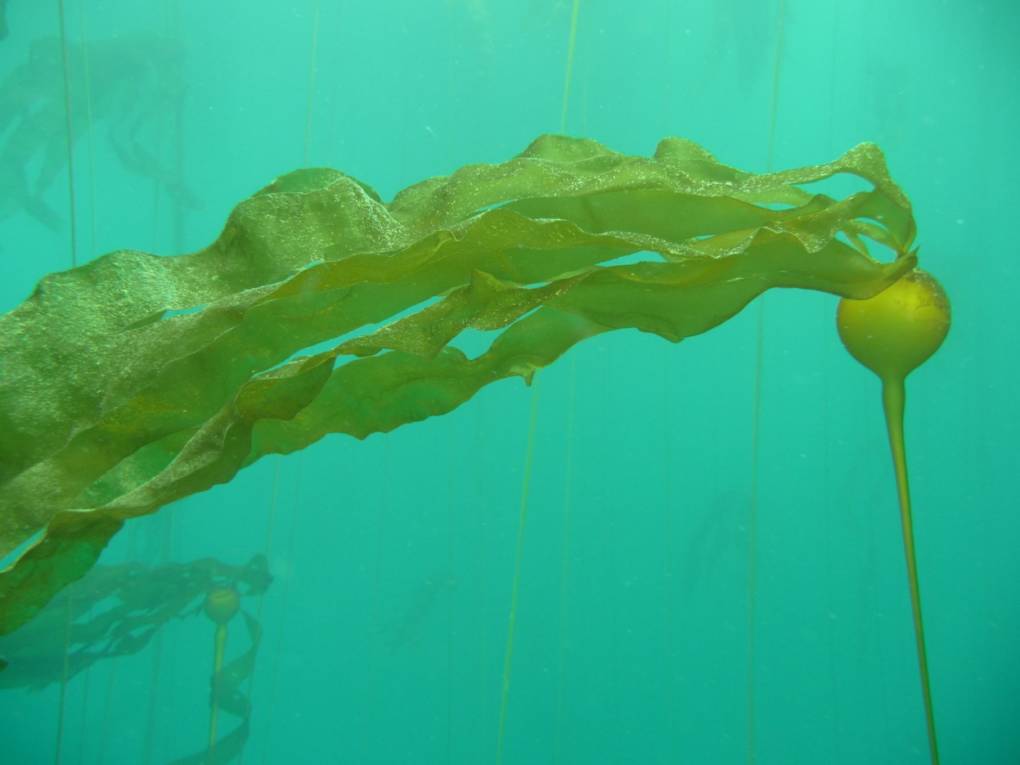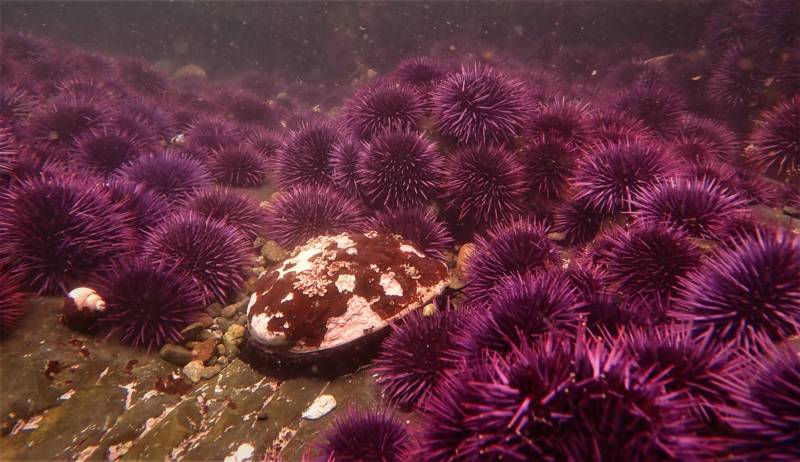An Undersea Forest In Decline
11:58 minutes

This segment is part of The State of Science, a series featuring science stories from public radio stations across the United States. This story by Peter Arcuni originally appeared on KQED Public Radio.
Envision California’s lush forests from San Francisco to the Oregon border. Now imagine that 90 percent of those forests disappear within two years. Laura Rogers-Bennett, senior environmental scientist with the California Department of Fish and Wildlife, says that’s exactly what happened to underwater kelp forests off Northern California’s coastline from 2014-16.
An analysis published this week in Scientific Reports documents the rapid decline of California’s bull kelp. The study links the reduction in the seaweed’s population to a confluence of environmental and ecological stressors, including a marine heat wave, a sea star die-off and the emergence of an “urchin barrens,” large swaths of subtidal zones overtaken by kelp-hungry purple sea urchins.

Rogers-Bennett, who monitors kelp forests in partnership with the UC Davis Bodega Marine Laboratory, says taken together, these strains on the kelp population threaten the greater coastal ecosystem.
“We are finding out,” she says, “that if we cross some of these thresholds, that the system will collapse.”
Observers are now noting kelp deforestation off the Oregon coast and in California south of San Francisco to Monterey Bay.
The paper, published Monday, points to intense ocean warming recorded in Northern California waters from 2014-17 as a major cause for the decline of the kelp forest. Kelp relies on nitrogen to thrive, but that element decreases as the ocean heats up.
Rogers-Bennett says as temperatures cooled back down, bull kelp, a resilient species, would normally have recovered. But warmer ocean temperatures created other conditions that accelerated the decline.
In 2013, an outbreak of sea star wasting disease linked to the warm ocean “blob” led to the mass die-off of 20 starfish species along the West Coast. In California, the disease decimated sea stars from San Mateo to Mendocino counties.
A primary food source for sea stars is urchins, which in turn feed on kelp. Without starfish to keep urchin populations in check, the number of purple sea urchins swelled beginning in 2014. The following year, says the analysis in Scientific Reports, “purple sea urchins shifted to a more aggressive feeding behavior,” devouring more layers of the kelp forest.
The deforestation of Northern California’s kelp affects other species that rely on it for sustenance.
For example, in 2017, abalone stocks in the region were down by 80 percent. That led the recreational red abalone fishery to shut down in 2018.
“If you envision the land … without the forest, there’d be many animals that would be starving, and that’s what we’re seeing,” Rogers-Bennett says.
“We are picking up and detecting what’s happening with the abalone, but they’re just an indicator species of that whole suite of organisms that depend on the kelp forest, that are all starving or have no homes.”
One way to help restore the kelp forest, Rogers-Bennett says, is to harvest urchins for human consumption. Uni, or sea urchin gonads, is a premium menu item at many sushi restaurants.
Rogers-Bennett says that while the scarcity of kelp harms the health and harvestability of wild urchins, relocating them to designated urchin farms, where they could be fed algae and other nutrients, could be a solution.
This goes beyond sustainable farming, she says.
“You’re actually having a restorative seafood product because the more you eat of urchin, the better it is for the kelp forest,” she said. “So you’re restoring the kelp forest by eliminating that grazing pressure from those urchin that are just eating everything.”
Rogers-Bennett and colleagues are in the process of identifying pockets of coastal waters off Sonoma and Mendocino counties where harvesters could remove urchins to bolster the recovery of California’s kelp forests.
Invest in quality science journalism by making a donation to Science Friday.
Peter Arcuni is a science reporter with KQED Public Media in San Francisco, California.
As Science Friday’s director and senior producer, Charles Bergquist channels the chaos of a live production studio into something sounding like a radio program. Favorite topics include planetary sciences, chemistry, materials, and shiny things with blinking lights.
Ira Flatow is the founder and host of Science Friday. His green thumb has revived many an office plant at death’s door.